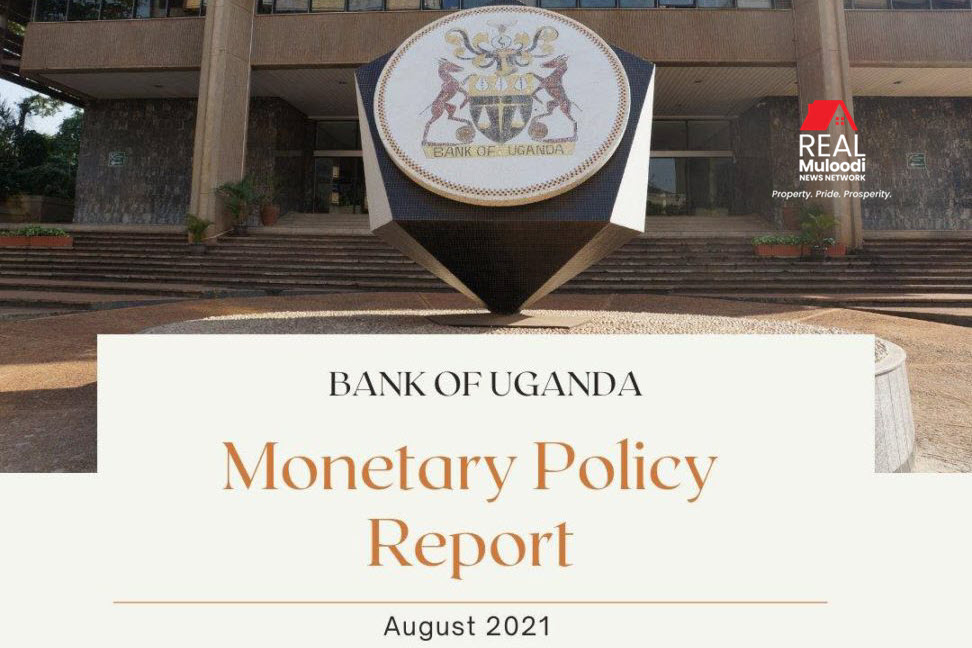UGANDA, Kampala | Real Muloodi News | The second pandemic wave and its associated containment measures has hampered Uganda’s economic recovery.
According to the Bank of Uganda Monetary Policy Report for August 2021, economic growth slowed down in the third quarter of 2021. This is because of the restrictive measures that are still weighing on the economic activities following the second wave pandemic hit.
Due to the slowed economic activity, the fiscal year 2021/22 economic growth is projected at 3.5 to 4.0 per cent.
The Bank of Uganda maintained the Central Bank Rate (CBR) at 6.5 per cent to meet the medium-term inflation target of 5 per cent during their Monetary Policy Committee (MPC) meeting.
Private Sector Credit growth was moderate, despite the accommodative lending environment. This is reflective of subdued demand for credit, increased risk aversion, relatively low level of economic activity, as well as the government’s high domestic financing needs.
The growth in Private Sector Credit in the quarter was dominated by household credit (18 per cent of total banks’ loans), real estate credit (20.4 per cent) and manufacturing (11.9 per cent).
There was a drop in Non-Performing Loans (NPLs) ratio, however credit risks remain elevated due to the expected expiry of the credit relief measures, the impact of the second lockdown measures on business activities.
Implementation of the FY2020/21 budget was hindered by revenue shortfalls. Tax revenue underperformed by Shs. 2,212.4bn on account of lower direct, international, trade and indirect tax collections.
Fiscal deficit, estimated at 9.9 per cent of GDP, was above target. This is largely due to a 23.1 per cent increase in government expenditure.
Inflationary pressures in the economy reflect the ongoing uncertainty, such as the COVID-19 condition surrounding the economic outlook. In the 12 months to July 2021, core inflation averaged 2.4 per cent and 3.4 per cent, remaining below the Bank of Uganda’s medium target of 5 per cent.
Inflation remains higher as uncertainty exerts downward pressure on things such as food prices, global commodity prices like oil, and rapid global price increases that raise inflation risks.
The Uganda Shilling has stayed reasonably steady against the US dollar and is likely to remain relatively stable in the short term, owing to limited domestic demand.
The continuation of the economic recovery will speed up private consumption because of pent-up demand. Bank of Uganda foresees a vigorous growth in external demand, which will contribute to a solid increase in exports, such as gradual tourism return, the oil sector’s Final Investment Decision (FID), and broad-based improvements in businesses that support economic growth.
However, risks to the economic growth outlook are significant given the persistence of high uncertainty.
READ MORE LIKE THIS:



